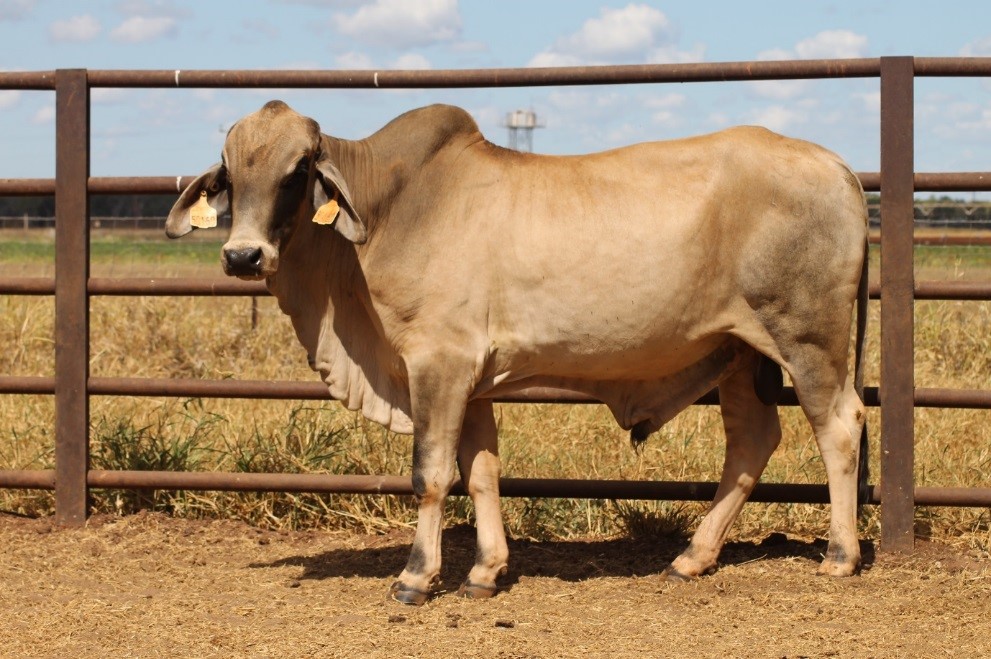Bull and female sale 2018
Whitney Dollemore, Pastoral Research Officer, Katherine
The annual bull and surplus female auction from the Selected Brahman and Composite programs was held on the 20 – 21 June 2018. The Selected Brahman and Composite programs are designed to objectively select for fertility, functionality and adaptation whilst maintaining growth under extensive Northern Territory (NT) conditions. There were impressive results from both the male and female sales with full clearance of the bulls and Composite females, with only 16 Brahman females passed in due to age.
| Bull Sale | Brahman Female Sale | Composite Female Sale | |
|---|---|---|---|
| Average Price ($) | 2,900 | 1,928 | 1,500 |
| Top Price ($) | 7,000 | 3,200 | 1,500 |
| Numbers offered | 83 | 83 | 63 |
Figure 1: Top priced bull from the 2018 sale DRF50160M sold for $7,000
The bulls and females from this sale are from the Department of Primary Industry and Resources (DPIR) Selected Brahman and Composite herds. These herds have undergone rigorous selection for generations with a particular focus on fertility and adaptability. This can be seen in the figures. The live export selection index, created specifically by NT producers, calculates a single dollar value to enable a quick view of the relative earning capacity of each bull. The index is an estimate of the profit that will be generated from the sale of the bull’s male progeny and the longer term profit from the reproduction capacity of the retained daughters. It is a combination of the Estimated Breeding Value (EBV) for growth, carcass and fertility traits. Some of the highest ranked bulls using this selection index in the Brahman breed were presented in this sale. Of the DPIR bulls sold 53 are ranked in the top 20% and two bulls are in the top 1 per cent for profitability in the Brahman breed.
The bulls are bred from heifer and first calf cows at Douglas Daly Research Farm and breeders at Kidman Springs in the Victoria River District. All of these cows are from a line of cows which readily reconceive after calving and produce an average of 152kg live weight per cow per year. The EBVs (Figure 2) give you a picture of the overall genetic trend of how this herd (red) and how the selection has influenced both fertility (in lower days to calving/rebreeding and higher scrotal size) and growth (18 month/600 day weight) in comparison to the Brahman breed average (green).

Figure 2: EBV herd averages for the DPIR Selected Brahman and Composite herds and the Brahman breed (Jan2018).
Bull selection is critical for profitability, the number of calves that will be produced by your breeder herd in 10 years’ time can be attributed to the type of bull selected and purchased this year. A bull that is selectively bred in an equal or harsher environment than your own is likely to produce daughters and steers that are highly adapted and productive in your environment. A bull and his daughters, your future cows, must fit their environment to stay in the breeder herd; it is much more profitable to select a cow to fit the environment than try to change the environment through supplementary feeding and/or parasite control. Genetic selection is a cheap, cumulative and permanent change which is determined by your breeding goals.
For more information please contact Whitney Dollemore 08 8973 9749 or whitney.dollemore@nt.gov.au.
Give feedback about this page.
Share this page:
URL copied!
